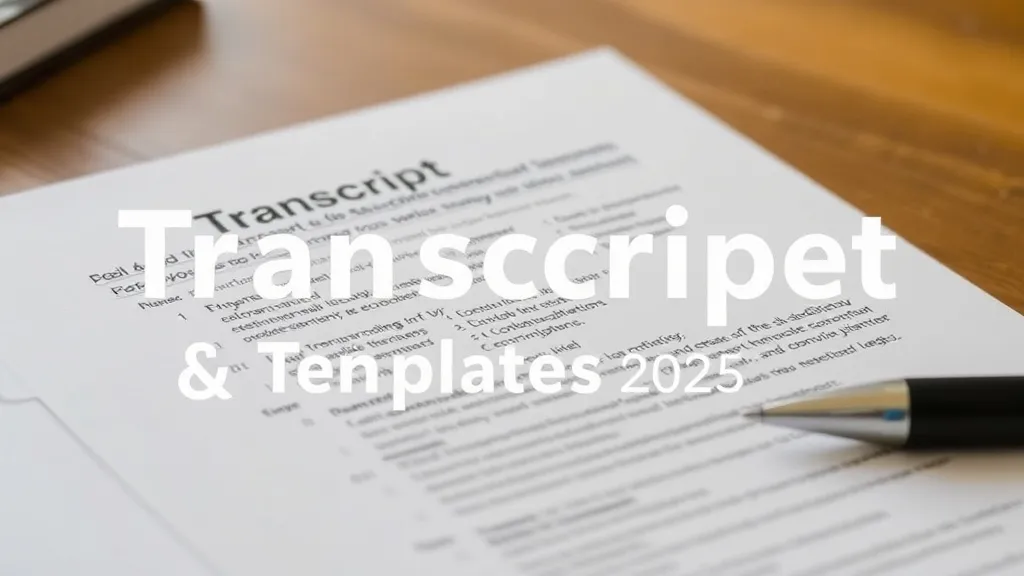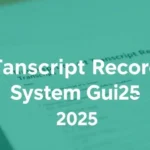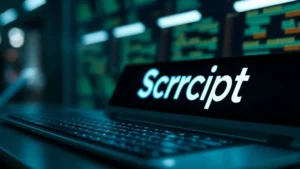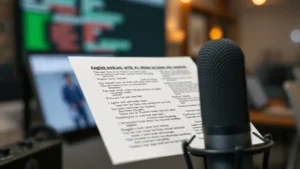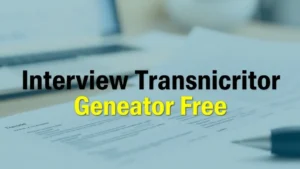Transcript Examples & Templates 2025
You know the drill—looking for a solid transcript example that’s clear, concise, and downright usable? You’re not alone. By mid-2025, over 60% of professional transcription workflows integrate AI tools to boost speed and accuracy (AWS HealthScribe). In this guide, you’ll learn everything from defining a transcript example to crafting your own template—and grabbing downloadable samples for academic, medical, legal, podcast, and interview contexts. Ready? Let’s dive in.
Table of Contents
What Is a Transcript Example—and Why It Matters?
Hook: Ever wondered how researchers turn spoken words into written gold?
Context: A transcript example shows you the exact format and level of detail needed for accurate records. Whether you’re documenting an interview or preparing court exhibits, knowing the right structure saves time and headaches.
Detailed Explanation: Simply put, a transcript is a written version of audio or video content. It can be verbatim—capturing every “um”—or cleaned up for readability. Key elements include:
- Speaker labels (Speaker 1, Dr. Lee)
- Timestamps (00:00, 01:15)
- Verbatim vs. summarized text
- Metadata (date, location, context)
Real Example: In a legal deposition, transcripts must be verbatim to withstand scrutiny in court. A simple snippet might look like this:
00:45 - Attorney: "Can you state your full name for the record?" 00:46 - Witness: "John Doe."
“Using structured prompt frameworks like DIG transforms AI into a personal data assistant.” – Jeff Su, Data Analyst
Actionable Takeaway: Next time you craft a transcript, pick a style (verbatim vs. summarized) and stick with it throughout.
Types of Transcript Examples & When to Use Them
Hook: Not all transcripts are cut from the same cloth.
Context: From academia to podcasts, each scenario demands its own style.
- Academic Transcript: Includes pauses, fillers, and emotional cues for qualitative research. Transcript Attestation Process 2025
- Medical Transcript: Structured sections (HPI, ROS, Assessment). See clinical samples here.
- Legal Transcript: Verbatim with precise timestamps and speaker IDs.
- Podcast Transcript: Cleaned-up text with sponsor messages and chapter markers. Castos Podcast Script
- Interview Transcript: Often summarized, focusing on key insights.
Anatomy of a High-Quality Transcript Template
Hook: What separates amateur transcripts from pro-grade ones?
Context: A solid template ensures consistency, compliance, and clarity.
- Header: Title, date, context, and version number.
- Speaker Labels: Clear identifiers (e.g., Interviewer, Subject).
- Timestamps: HH:MM format at regular intervals.
- Verbatim Text: Exact words, including fillers (if verbatim).
- Section Headers: For long documents (e.g., Medical: HPI, ROS).
- Metadata & Notes: Annotations, evidence links, AI segment IDs.
Mini-Template Snippet:
Title: Research Interview Transcript Date: Sep 12, 2025 | Location: Zoom 00:00 - Interviewer: "Thank you for joining us..." 00:05 - Participant: "Happy to be here."
“Traceability and transparency in AI-generated transcripts are non-negotiable in healthcare.” – AWS Documentation
Actionable Takeaway: Customize your template for each use case, then save it as a master file for reuse.
How to Write Your Own Transcript Example (Step-by-Step)
Hook: Feeling overwhelmed? Let me explain how simple it can be.
Context: A stepwise process demystifies transcript creation.
- Prepare Your Audio: Ensure clear sound and speaker identification.
- Choose a Template: Use an existing Transcript Attestation Process 2025 or draft one from scratch.
- Transcribe Verbatim: Start typing—include filler words only if needed.
- Add Timestamps: Every 30–60 seconds, or at speaker changes.
- Review & Edit: Clean up grammar, verify accuracy (aim for 95%+).
- Export & Distribute: Save as .docx or .pdf and share.
Case Study: A research team cut transcription time by 30% using AI prompts based on Jeff Su’s DIG framework (Nucamp AI Essentials).
Advanced Tips & Future Trends in Transcription
Hook: What’s next for transcripts in 2025 and beyond?
Context: AI integration, responsible AI, and standardization are shaping the future.
Interestingly enough, platforms now offer built-in evidence links and segment IDs to meet compliance mandates. Multimodal transcription—combining text, imagery, and sentiment analysis—is on the rise.
Actionable Takeaway: Evaluate transcription vendors for traceability features and API integrations to future-proof your workflows.
Summary at a Glance
- Define your transcript style (verbatim vs. summarized).
- Use structured templates with clear metadata.
- Integrate AI tools for faster drafts, then polish by hand.
- Stay compliant with traceability and transparency standards.
FAQ
- What is the best transcript format for interviews?
- Cleaned transcript with speaker labels and timestamps every 30 seconds usually works best. Summaries can accompany verbatim sections for clarity.
- Can AI replace human transcriptionists?
- AI boosts speed and basic accuracy (~95%), but human review remains essential for context, emotion, and jargon.
- How do I add timestamps automatically?
- Many speech-to-text platforms include timestamp options. Look for settings to insert timecodes at fixed intervals.
- Are there free transcript templates?
- Yes—universities and open-source communities often share .docx or .pdf templates. Search Transcript Attestation Process 2025 to find them.
- Why include metadata?
- Metadata (date, location, speaker bios) ensures transcripts retain context, legal validity, and research integrity.
Conclusion
In a world where every word counts, having the right transcript example and template can transform your projects—be it academic research, medical documentation, or a top-ranked podcast. You’ve learned how to define transcripts, choose styles, draft your own templates, and leverage cutting-edge AI tools responsibly. Now it’s your turn: 1) Download or customize a template that fits your needs, 2) Practice transcribing a short audio sample, and 3) Experiment with AI-assisted workflows to save time. The bottom line is this: a well-crafted transcript example not only boosts accuracy but also enhances credibility—and that’s huge. Ready to elevate your transcription game in 2025? Go for it—and watch your efficiency soar.
